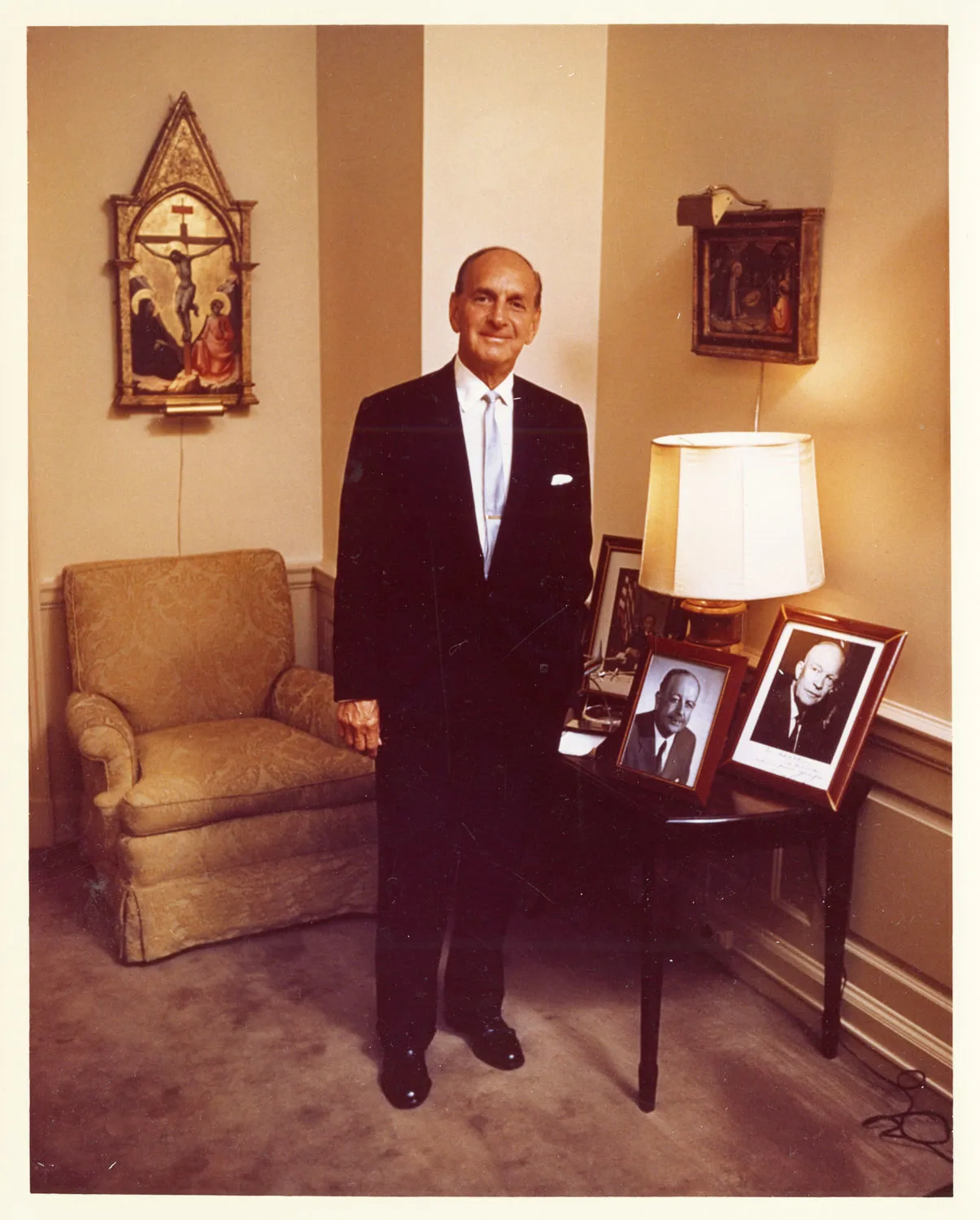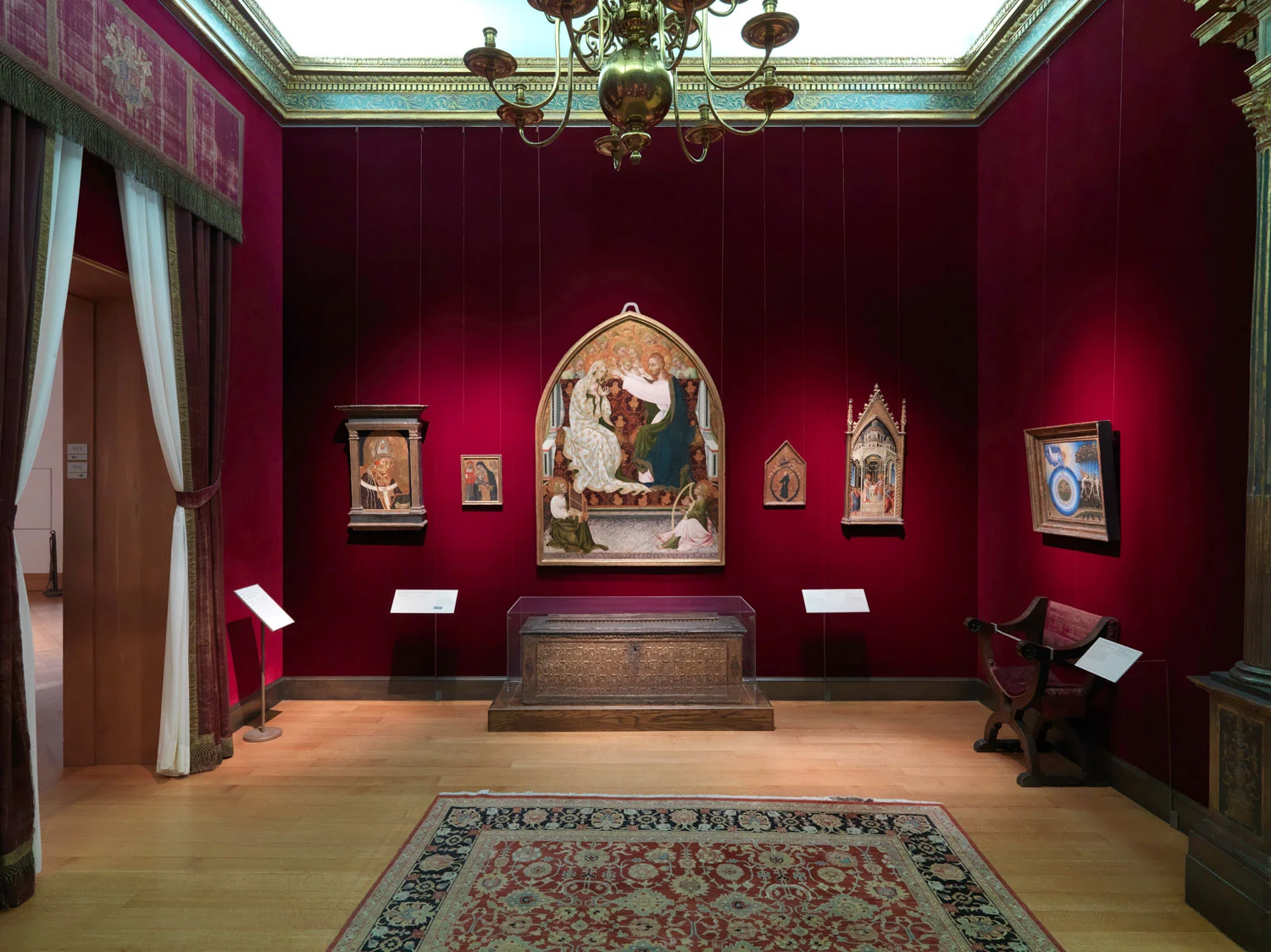Lehman Brothers Family Partners
Lehman Brothers began as a close-knit, family enterprise. While the number of its employees grew steadily, until 1924 only blood-related male members of the family could become partners. The policy provided a trusted web of relationships as the firm expanded in its size, operations, and locations. Lehman partners also served as board members on a number of their clients’ companies, further extending the firm’s network of connections. While most Lehman men became partners, some pursued careers in the public sector. Herbert H. Lehman left the firm in 1928 for politics, serving as governor and senator of New York State. Irving Lehman, who never entered the partnership, was a lawyer and chief judge of the New York Court of Appeals. Following the example set by Emanuel and Mayer Lehman in the 1800s, the Lehman family has made noteworthy contributions to philanthropic work in health, social services, and the arts.

Franklin D. Roosevelt, Governor Herbert Lehman, and Mayor Fiorello LaGuardia on an election campaign tour, 1940. International Garment Workers' Union Photographs, Kheel Center, Cornell University.

Robert Lehman, ca. 1960. Lehman Brothers Records, Baker Library, Harvard Business School.

Herbert Lehman giving a speech. International Garment Workers' Union Photographs, Kheel Center, Cornell University.

Robert Lehman, ca. 1960. Lehman Brothers Records, Baker Library, Harvard Business School.

Herbert Lehman giving a speech. International Garment Workers' Union Photographs, Kheel Center, Cornell University.

Franklin D. Roosevelt, Governor Herbert Lehman, and Mayor Fiorello LaGuardia on an election campaign tour, 1940. International Garment Workers' Union Photographs, Kheel Center, Cornell University.

Herbert Lehman giving a speech. International Garment Workers' Union Photographs, Kheel Center, Cornell University.

Franklin D. Roosevelt, Governor Herbert Lehman, and Mayor Fiorello LaGuardia on an election campaign tour, 1940. International Garment Workers' Union Photographs, Kheel Center, Cornell University.

Robert Lehman, ca. 1960. Lehman Brothers Records, Baker Library, Harvard Business School.

Robert Lehman Galleries. Courtesy of Metropolitan Museum of Art.
Robert Lehman
Robert Lehman, also known as Bobbie, led Lehman Brothers from 1925 until his death in 1969, guiding the firm through the Great Depression into the postwar economic growth of the 1950s and 60s. Robert’s great passion was art. After graduating from Yale, he traveled throughout Europe collecting art for his father, Philip Lehman, who had worked with the influential art connoisseur and collector Bernard Berenson. Robert became a renowned collector as well, and in 1954, the Metropolitan Museum of Art opened an exhibition of paintings from his collection of western European art. In 1957, the Musée de l’Orangerie in Paris exhibited 293 pieces from the collection. Robert Lehman’s bequest of over 2,600 works of art to the Metropolitan Museum resulted in the opening of the Lehman Wing in 1975, often referred to as a museum within a museum.
Herbert H. Lehman
During World War I, Herbert H. Lehman served as chief assistant to Franklin D. Roosevelt, who was then the undersecretary of the Navy. In 1928, Herbert gave up his partnership in Lehman Brothers when he was elected Lieutenant Governor of New York. He then served four terms as Governor of New York from 1933 to 1942. Influenced by the writings of the social reformer Jacob Riis, Herbert focused on public housing, child labor laws, minimum wages, unemployment relief, and aid for disabled children, the blind, and mothers with young children. He was also an early advocate for national health. Herbert served as Director-General of the United Nations Relief and Rehabilitation Administration, providing aid to postwar Europe and Asia. From 1949 until 1957, he represented the state of New York in the U.S. Senate, working tirelessly to protect civil liberties during the Joseph McCarthy era.